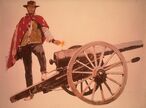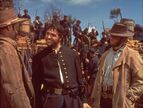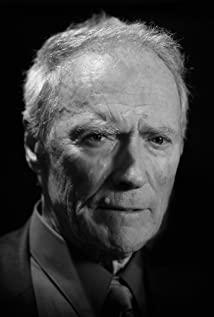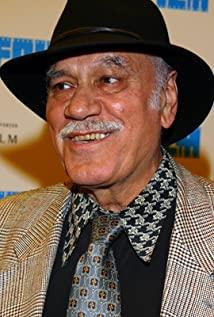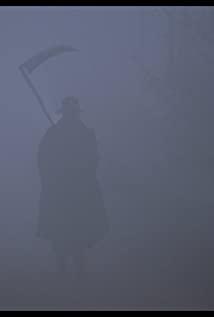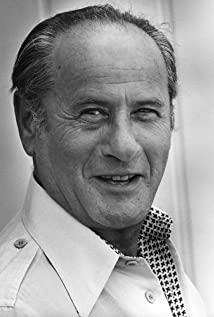With 9 points, I finished watching the long-standing "Wild Trilogy" in a row. Compared with the previous two works, this "The Good, the Bad and the Ugly" is undoubtedly Leone's masterpiece, and it is also the best and most well-known.
The plot design of the movie is very neat and rich in content. The three-hour duration gives the film plenty of time to enrich the narrative. Slow narrative rhythm, eloquent character relationships and quite freehand environmental photography. Gradually draw a different picture of the western world. At the beginning of the film, the characters are explained first, and the three main characters appear one after the other, each showing the characters in a stage. At the same time as the initial introduction of the characters, it pave the way for the various intersections of the next three, heralding the coming of a complicated story. The three characters represent the three narrative lines of the film. Although there are some intersections and separations in the middle, they gradually merge into two with the development of the plot. Finally, when the three main characters meet, the narrative line merges into one and leads to the final The ending. The behavior logic of the three main characters is very clear, and the characterization is even more out of facial makeup. After using subtitles to roughly mark the characters as "wicked people, good people, and ugly people", they have carried out a more in-depth portrayal through the plot.
The evil men do all sorts of bad deeds in the northern prisoner-of-war camp, the encounter between the ugly man and his brother in the medical clinic, and the rich details of the good man. These are very helpful to strengthen the realism and heavyness of the characters, and can make people more convincing and deepen the impression. Various changes in the plot continue, and the intrigue between the characters also appears frequently. Basically, they are more reasonable and smooth, and there are no major flaws.
The film subtly integrates the Civil War into the story and becomes the most important historical background of the film. In the 1960s when the film was released, the United States was in the quagmire of the Vietnam War. The domestic society was in turmoil, various thoughts and sports continued to appear, the prosperity of rock music, the emergence of hippie culture and the popularity of anti-war thoughts. The Civil War portrayed by Leon in the film emphasized the cruelty and absurdity of the war. It was undoubtedly influenced by the anti-war ideology at that time, or it was used to express a reflection and reflection on American society at that time. concern. Of course, the film also hints at the end of the pioneering era since the westward movement of the United States. Behind the Civil War was the impact and subversion of the advanced industrial civilization in the north on the traditional serfdom economy in the south, and the victory of the northern capitalists represented by Lincoln also heralded a new era. This was already reflected in Leon's second "The Deadly Dusk". The appearance of the train was the biggest impact on the original western world. Western cowboys are products that existed in a specific period, only appearing in desolate places lacking legal constraints and economic depression. But these necessary conditions will gradually disappear with the advent of modern civilization, so the cowboys who depend on these environments will inevitably disappear. Cowboys will become history, and the glory they created will become the elegy of the times.
In this film, Leone continues the strong style he has always used in the first two films, and through the training of the first two films, it is more prominent and perfect in this film. This is very obvious in two scenes in the film. The first scene was when the ugly man came to the cemetery for the first time, the camera was facing the ground at first, and then the camera panned and zoomed out as the character got up, showing a scene of densely packed graves in the distance, and the soundtrack also sounded. After that, as the characters move, the camera moves horizontally and gradually speeds up until the background is completely blurred. The rhythm and loudness of the soundtrack also echoes the picture, which is very impactful and expressive, very shocking.
The second scene is the textbook confrontation between the three at the end of the film. The confrontation lasted for several minutes, and there was no line appearing, and it was completely relied on editing and soundtrack to create a sense of tension. First, use multiple perspectives to shoot the characters, then use a large perspective to show the positional relationship of the characters, and then in the static position, through the continuous performance of the three characters through editing, as time goes by, first use The scene presents the characters, then the close-up shots, then the face close-ups, and finally the big close-ups of the eyes, with close-ups of the hands and over-the-shoulder shots interspersed in the middle. The scene keeps shrinking and the editing speed keeps accelerating. Coupled with Morricone's genius soundtrack, the tension can continue to be superimposed, and finally released, full of tension.
When it comes to epics, people generally think that they are the grand productions, which are nothing more than grand scenes, grand productions and grand narratives, but they are far more than that. I personally believe that these factors are important, but they should not be limited to them. A complete story, rich three-dimensional characters and exciting plot, etc., these are the key points that can truly connect such factors and combine them into an excellent movie. Based on the above narrative, I personally feel that such a film with a strong director style and author’s expression, a high degree of completion, and profound connotation can be called a "Western Epic".
View more about The Good, the Bad and the Ugly reviews



